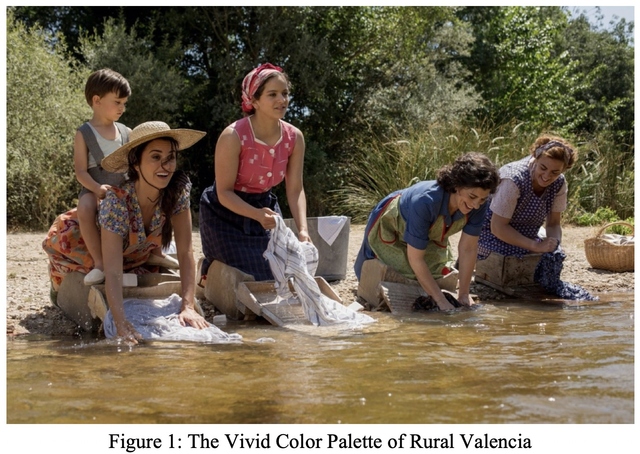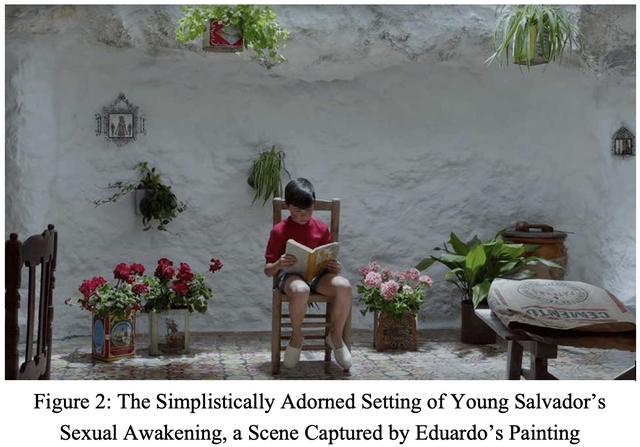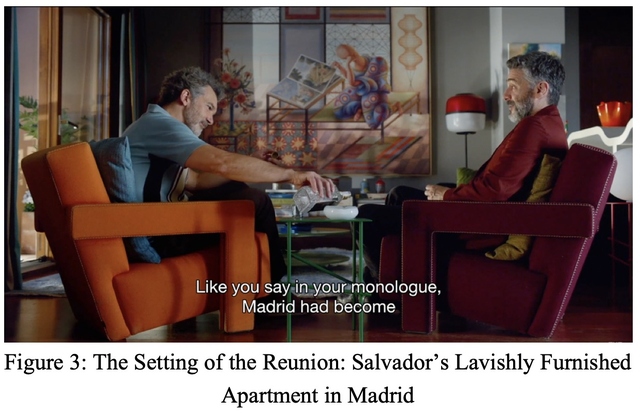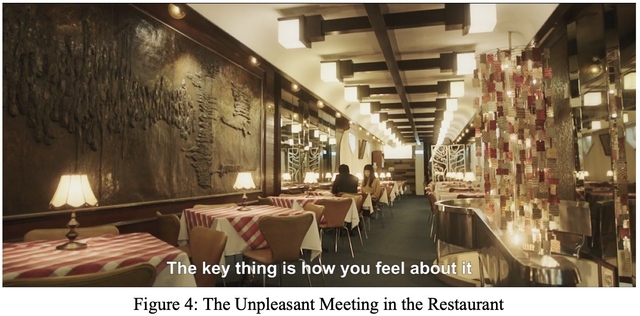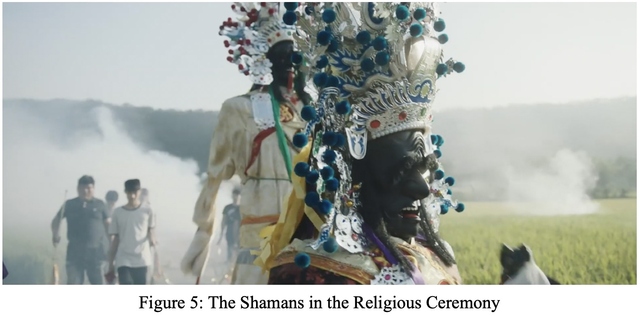Negotiating the Concept of National Allegory: Homosexuality, Departure, and Homecoming in Pedro Almodóvar's Pain and Glory and Midi Z's Nina Wu
By
2020, Vol. 12 No. 09 | pg. 1/1
IN THIS ARTICLE
KEYWORDS
Often regarded as the glorious palace showcasing contemporary world cinema (“Press Conference”), the Cannes Film Festival epitomizes the roles of an accreditor, an archaeologist, and a political activist. It jumpstarts the careers of emerging auteurs from around the globe, casts light on obscure cinematic traditions, and engenders debates on controversial social issues in specific nations and regions. Encounters with the foreign constitute an integral part of the festival experience for the majority of the audience. As a result, filmmakers from less renowned national industries (i.e. countries other than the U.S., France, and Britain) are often expected to represent the culture of their countries for the gaze of the “film tourists.” The difficult task of narrating a story that contains contextual specificities unique to a nation, while at the same time achieving universal appeal among a heterogenous audience, challenge directors to seek innovative solutions. In the 2019 Cannes Film Festival, two films negotiated national, personal, and cultural memories by using the same narrative tropes: homosexuality, leaving home, homecoming, and the process of filmmaking. Spanish auteur Pedro Almodóvar’s autofiction, Pain and Glory (Dolor y Gloria, 2019), represents post-Civil War rural Spain as a utopia that constantly reappears in the reminiscences of the ailing film director Salvador Mallo (Antonio Banderas). Salvador, who now lives in a lavish apartment in modern Madrid, repeatedly seeks to resurrect memories from his childhood and adolescence, which nevertheless exist out of reach in his real life. Contrary to Almodóvar’s nostalgic portrayal of the rural home, Burmese-Taiwanese director Midi Z’s psychological thriller Nina Wu (Zhuo ren mi mi, 2019) depicts the ancestral home of Nina (Wu Ke-Xi) as a site of alienation and rejection, where the heroine’s dream of becoming a film star is overshadowed by the social rejection of her homosexuality and statutory rape. Both denying the idea of home as a stable and concrete locale, Almodóvar’s Salvador and Z’s Nina represent displaced people who do not truly come to terms with their migration. As such, Pain and Glory and Nina Wu counter the festival’s promotion of foreign films as national allegories. The Festival Experience: Foreign Cinema as a Cultural WindowAs the world’s largest exhibition and distribution centers for international cinema, traditional A-list film festivals such as Cannes, Berlin, and Venice have consistently privileged foreign films that can balance between displaying exotic culture and garnering universal appreciation, thus creating a genre of “festival films.” Listening to strange sound, viewing foreign landscapes, and adjusting to different cinematic rhythms are the main sources of excitement for most festivalgoers (Nichols 16-17). Thus, festival films are often expected to serve as “cultural windows,” through which audiences can briefly experience unfamiliar cinematic traditions and locales without actually having to travel to these countries.Festival critics and journalists have readily internalized these expectations in that they utilize Cannes as an opportunity to educate their readers about yet uncharted film markets and promote foreign films as national allegories. For instance, Screen Daily’s review of the Icelandic film A White, White Day (Hvítur, Hvítur Dagur, Hlynur Palmason, 2019) begins by explaining the meaning of the film’s title in Icelandic proverbs and by applauding the beautiful Icelandic coastline portrayed in the outstanding cinematography (Nesselson, “A White, White Day”). Similarly, Le film français’s coverage of Pain and Glory begins with the lament that “On s’était presque habitué à une présence rare du cinéma espagnol à Cannes, où il était encore plus difficile de trouver un titre en compétition officielle.” (“We were almost used to a rare presence of Spanish cinema in Cannes, where it was even more difficult to find a title in official competition.”; Pelinard-Lambert 20). Clearly, for these journalists and critics, a foreign film’s most salient identity is its national origin, and the main attraction that it can offer is a glimpse of the culture of its native country. Despite their affinity for the exotic, Cannes audiences are more prepared to understand foreign film industries by comparing them with their long-term opponent, Hollywood, rather than encountering the unfamiliar completely in its own terms. In other words, Hollywood serves as a permanent marker against which international cinema is forced to define and assert itself. Opening the 2019 festival editions of The Hollywood Reporter (THR), one will find a wide array of country profiles analyzing emerging film markets such as Southeast Asia (Scott 18-24) and film production policies of Eastern European countries (Hundic 28-34). These profiles explain lesser-known film markets to American readers by offering carefully selected box office figures of American blockbusters and U.S. film production policies for comparison. THR’s interview with Russian director Alexander Rodnyansky, titled “‘I never wanted to conquer Hollywood’,” presents him both as a leading critic of the Russian culture ministry’s censorship and as a locally based auteur, even though the director asserted his aspiration for universal acclaim: “I would like to do universal stories in both film and television that would transcend borders and appeal to mass international audiences” (Kozlov 30). This binary mindset of “Hollywood vs. its alternatives” demands that foreign industries adopt certain Hollywood norms of production, but simultaneously maintain their cultural integrity by asserting geopolitical specificity. Thus, a highly acclaimed award winner not only has to serve as an allegory of its nation of origin, but also employ universally recognizable artistic strategies that have wide appeal (Deshpande and Mazaj 113-117). This year’s Palme d’Or winner, Bong Joon-ho’s Parasite (Gisaengchung, 2019), precisely embodies these elements. The main characters’ parody of North Korean news reporters certifies the film’s regional specificity. At the same time, the film’s constant references to American universities, American consumer products, and the importance of proficiency in English, as well as its implementation of typical Hollywood genres such as comedy and thriller, tame the film’s foreignness to make it palatable for the taste of western audiences. Nevertheless, two films at this year’s Cannes Film Festival challenge the notion of a stable identity through narratives of leaving home and homecoming. In Pain and Glory and Nina Wu, Salvador and Nina both leave their rural ancestral homes for the economic opportunities that cities provide. Later in life, both characters revisit their homeland, though the nature of their visits is either imaginary or surreal. These narratives of displacement raise questions about belonging and expose the difficulties of identity construction. Pastoral Landscape as Romanticized Home and Breeding Ground for Homosexual DesireAlmodóvar’s portrayal of Salvador embodies the point of view of a displaced gay man looking back at his past. The film begins with retired film director Salvador immersing himself in a swimming pool and ruminating about his childhood. The scene immediately shifts to 1960s rural Valencia, where the young Salvador plays by the river while his mother and her companions do laundry. The rest of the film continues this parallel narrative structure, contrasting the older Salvador’s career impasse with his carefree life half a century earlier. In the contemporary storyline, Salvador invites actor Alberto Crespo (Asier Etxeandia) to an interview about the film Sabor (Taste), on which the two collaborated decades ago. Salvador tries heroin with Alberto and later poignantly criticizes Alberto’s bad acting during the interview. Though enraged, Alberto continues offering heroin to the now addicted Salvador in order to receive permission to perform Salvador’s autobiographical soliloquy Adicción (Addiction) on stage. The adolescent Salvador’s gay lover in the play, Federico Delgado (Leonardo Sbaraglia), surprisingly attends the performance and later revisits Salvador. This brief encounter reminds Salvador of the final years that he spent with his mother Jacinta (Penélope Cruz), as well as his first homosexual attraction towards a mason/painter, whom the child Salvador taught to read and write. The aging film director’s reconnection to his past acquaintances and memories reinvigorates him, allowing Salvador to overcome his drug addiction and start a new film project, an autofiction, at the end of the film. In Strange Encounters: Embodied Others in Post-Coloniality, Sara Ahmed offers a fluid definition of home. It is the “space from which one imagines oneself to have originated” (Ahmed 77). Although home typically refers to the place where one usually lives, where one’s family lives, or one’s native country (Ahmed 89), it is less a physical locale or geographical territory than a sentimentalized space of belonging. It is “the lived experience of locality, its sounds and smells” (Brah 192). The act of leaving home transforms one into a stranger who loses touch with the newest developments in one’s homeland while struggling to be accepted by the new, adopted home. Nostalgia, imagination, and desire characterize the displaced person’s emotional attachment to the old home. This fantasy creates a fetishized place of no return, a utopic past which can no longer be inhabited in the present. Ahmed argues that in the narrative journey of leaving home, the space that is most like home is not the space of inhabitance, but “the very space in which one is almost, but not quite, at home,” such as in airport terminals or at train stations (78). The feeling of having a definite destination offers the same sense of purpose and security that characterizes the experience of being at home. In Pain and Glory, Salvador’s rural ancestral home serves as a point of departure and return, experiences that are complicated by the protagonist’s homosexual identity. In Queer Cinema in the World, Karl Schoonover and Rosalind Galt identify the significance of pastoral landscapes in queer narratives. They argue that rural environments help to nurture the reconfiguration of the characters’ sexuality because the pastoral represents the merging of the sublime beauty of the natural and the human world into a harmonious whole (Schoonover and Galt 246). Whereas the clichéd queer life is urban, the countryside is a green world away from oppressive cultures. Almodóvar’s portrayal of Salvador’s childhood home precisely demonstrates the healing and invigorating power of the rural landscape. The 1960s Valencia portrayed in Pain and Glory is composed of a beautiful color palette which completely leaves out any trace of the poverty that characterized post-Civil War Spain in reality. In one of the first shots of the film, the child Salvador plays by the blue river while looking at his gorgeous mother Jacinta. The golden sunshine, green reeds, white bed sheet, the women’s pink, green, and purple dresses, and their delightful chanting of the 1962 song “A tu vera” together constitute a scene of simple rural life that is nevertheless alluring and charming (“Pain and Glory (2019): soundtracks”). Accompanied by melancholic tunes of the violin in the background, this opening scene sets a nostalgic tone for a highly revisionist, idealized sense of the past that is too perfect to seem real. The same impeccable arrangement of the mise-en-scène reappears in the chapter titled “the first desire.” The sequence begins with a long shot of the nine-year-old Salvador sitting on a chair and reading a book against the background of the newly whitewashed wall. The pink and red flowers surrounding him correspond with the saturated red color of his shirt, hinting at the erotic nature of this scene. Eduardo (César Vincente), the mason/painter whom Salvador teaches to read, decorates Salvador’s house with variegated tiles in exchange for the education. Charmed by the child’s reading posture, Eduardo paints a portrait of Salvador, which unfortunately gets lost and is rediscovered only decades later. After work, the sweat-soaked Eduardo wishes to take a shower before leaving. As soon as Salvador fetches shower water for Eduardo and goes to the bedroom for a nap, a point-of-view shot frames Eduardo’s young, muscular body through the doorframe. A slow motion of Eduardo’s movements, reverse shots of Salvador’s red cheeks and heavy breathing, along with the sound of buzzing bees convey the main character’s budding homosexual desires. This entire sequence resembles the setting of a fairytale: far from being a marker of poverty and low social status, the cave in which Salvador’s family dwells possesses a poetic quality akin to that of a castle. The carefully constructed objects and masterful use of color elevate the main character’s rural past to the status of a utopian world without pain and suffering. Salvador’s childhood as remembered by his older self is an ideal locale where sweet dreams and loving companions constitute the common scenes in daily life. Salvador’s decision to leave his rural family home and seek new opportunities in Madrid renders him as a displaced person who fails to come to terms with his homosexual desires and to maintain the sense of psychological security that he once enjoyed under the protection of his mother. Thus, the scene in which the middle-aged Salvador reunites with his old lover Federico conveys a tone of melancholia and sorrow that contradict sharply with the romance and glamor that permeate the rural scenes. The older Salvador’s blue shirt, elaborately furnished apartment, and dazzling art collections serve as the counterpart of his brightly lit and simplistically adorned old home. Whereas the pastoral landscape is the nurturing ground for young Salvador’s homosexuality, the highly cultured space of the older Salvador’s urban house weighs heavily on the protagonist and serves as a silent reminder of the cultural and societal norms that critically judge his homosexuality. Specifically, when Federico asks Salvador whether he wants him to sleep over, Salvador reluctantly refuses the proposal by replying, “I do, but I want to end our story as God intended.” Consequently, in Pain and Glory, the experience of leaving home is closely entangled with the protagonist’s identity development, represented through the binary between the idealized pastoral landscape and the suffocating, melancholic urban milieu. Salvador’s reunion with Federico and his rediscovery of Eduardo’s portrait of him reading in that romantic afternoon reinvigorate the now aging director, allowing him to rediscover hope in life, fight against his drug addiction, and open a new chapter in his career. However, a true reunion with either lover still eludes the protagonist. In this sense, Salvador’s filmmaking activity is his attempt to search for the lost home and past desires. For him, the cinema is “the very space in which [he] is almost, but not quite, at home,” as defined by Sara Ahmed (78). The fact that Pain and Glory ends with a film production scene representing Salvador’s childhood suggests the role of cinema to record, realize, and eternalize Salvador’s memories of home and homosexuality. It is this documentary-like activity of recording and glorifying the past that allows the director to be closest to the home and the love which he has long lost, and will never be able to relive and reinhabit. The romanticized home in Pain and Glory is not a concrete location; rather, it occurs only in the form of dreams, memories, and celluloid images. The Rootless Nomad in Nina WuIf Almodóvar’s melodrama resembles a poetic chanting that leads the audience through the nostalgic memories of the aging auteur, Midi Z’s Nina Wu offers a more upsetting narrative of homecoming. A #metoo themed drama (Ide, “‘Nina Wu’: Cannes Review”), the film recounts the life of lesbian actress Nina, who came to Taipei eight years ago from her hometown in rural Taiwan to realize her dream of becoming a film star. Nina’s pursuit of fame finally reaches fruition when she auditions for the leading role in a period drama. Selected as the main female character, Nina garners unprecedented publicity for her performance in the film’s notorious sex scenes. Following the film’s success, Nina triumphantly visits her hometown during Chinese New Year. However, her reunion with family and friends starts to trigger disconcerting memories related to the audition. The film’s ominous tone and harsh musical score gradually reveal Nina’s increasingly chaotic, delirious psyche. The ending discloses the cause of Nina’s hysteric state: she was raped by the film’s producer during the audition. Nina’s destabilized psychological state is directly related to her displacement from home, an experience shared by director Midi Z. Z’s own life embodies the difficult journeys of border crossing: as a second-generation Chinese immigrant born in Myanmar, Z went to study in Taiwan at age sixteen and subsequently adopted Taiwanese nationality (Ma 66). His homecoming trilogy, Poor Folk (Qiong ren, liu lian, ma yao, tou du ke, 2012), Ice Poison (Bing du, 2014), and The Road to Mandalay (Zai jian wa cheng, 2016) all focus on displaced people who lack a concrete, stable identity and thus constantly suffer for not belonging to any national group (Huang 78-82). The psychological instability associated with Nina’s departure from home are entangled both with Nina’s inability to publicly assert her lesbian identity and with her vulnerable femininity in a male-dominated film industry. Nina Wu portrays the protagonist’s residence in Taipei as a distressing experience. The film’s opening sequence consists of scenes without dialogue, showing Nina wandering alone among fast-moving crowds on Taipei’s streets and in the subway, silently eating dumplings in her studio apartment, and dressing up to please her anonymous fans on a live streaming platform. This solitude does not come to an end as Nina departs for an appointment with her agent, since the large restaurant hosts no guests other than the pair. An extreme long shot of the conversation partners foregrounds the vivid red color of the tablecloth and the bright lighting, which completely dwarf Nina’s existence, since her beige shirt and black trousers completely merge into the surroundings. The stark presence of saturated colors underlies the erotic nature of this conversation: in order to make a name for herself, Nina has to conceal her homosexuality and perform her body in licentious sex scenes with men. This opening sequence represents Taipei as a place where Nina does not have a sense of belonging, where finding a stable livelihood and jumpstarting a dream career seem to be out of reach, and where control over the female body is clutched in the hands of male capitalists. While metropolitan Taipei is an epitome of alienation and hypocrisy, the ancestral home in Nina Wu likewise offers no comfort, but instead denial and disillusionment to the homecoming daughter. What awaits Nina in southern Taiwan is not acclaim and encouragement, but her girlfriend’s refusal to formally announce their lesbian relationship. When Nina implores Kiki (Vivian Sung Yun-hua), her high school lover, to come with her to Taipei and rekindle their relationship, Kiki rejects the proposal in fear of negative publicity resulting from Nina’s newly gained fame. Arguing that her parents pressures her to live a normal life, get married, and produce an heir, Kiki tells Nina, “you live in the film world,” whereas she lives in reality and thus has to consider familial consequences of her actions. Therefore, the rural community in Nina Wu is a hostile, conservative environment that rejects the protagonists’ homosexuality. The rural community’s disavowal of Nina’s lesbian identity is rendered more concrete in an ensuing scene. The morning after the argument occurred, Nina traverses the landscape of her hometown on a motorcycle, accidentally encountering shamans performing a religious ceremony. A shaman bumps into Nina, causing her to fall off from her motorcycle, while another exorcist claims that Nina is possessed by ghosts. In Ghostly Desires: Queer Sexuality and Vernacular Buddhism in Contemporary Thai Cinema, Arnika Fuhrmann argues that East Asian traditions associate ghosts with hyperfemininity (61). Since Nina’s quarrel with Kiki over their homosexuality occurs just the night before, this scene invites the audience to associate Nina’s spiritual deviation, her “possession by ghosts,” with her sexual deviation, as seen by the conservative rural society. Nina’s homecoming thus exemplifies the estrangement of the displaced, who cannot be fully accepted by her adopted home, Taipei, but is also rejected by the traditional society which she has left. In this sense, Nina is a rootless nomad who does not belong anywhere, who is constantly in search for security and stability but never achieves success. This sentiment is shared by director Midi Z, who finds that definitive identity labels, such as “Burmese,” “Chinese,” or “Taiwanese,” diminish his multifaceted personhood (Ma 70). Reenacting the Harvey Weinstein scandal in Hollywood as the core of the narrative, Nina Wu claims a transnational alliance that transcends the film’s setting in Taiwan. Presented with the task of striking a balance between national specificity and universal appeal, directors Pedro Almodóvar and Midi Z both choose to employ narratives of leaving home, homecoming, homosexuality, and filmmaking to negotiate the concept of a stable, concrete identity. Both create a binary between rural and urban landscapes. In Pain and Glory, Salvador’s childhood home in Valencia is an idealized version of the past, the site of his first sexual awakening, whereas the middle-aged director’s apartment in Madrid hosts a soul tortured by pain and impasse and bound by societal codes of conduct. By contrast, the heroine in Nina Wu represents a rootless nomad who is both ruthlessly exploited by urban capitalism and simultaneously ostracized by her rural homeland because of her sexuality as a lesbian. A person who does not neatly fit in with social norms, Nina is a stand-in for director Midi Z, whose complex diasporic background often eludes common definitions of nationality that are so readily adopted by festival goers to comprehend a foreign piece of art. The complexity of identity development and the murky terrain of identification with a particular nation or culture as portrayed by Pain and Glory and Nina Wu will become relevant discourses in the transnational cinematic landscape that characterizes screen cultures today. ReferencesAhmed, Sara. “Home and Away: Narratives of Migration and Estrangement.” Strange Encounters: Embodied Others in Post-Coloniality, Routledge, 2000, pp. 77-94. Brah, Avtar. Cartographies of Diaspora: Contesting Identities. Routledge, 1996. Deshpande, Shekhar, and Meta Mazaj. “Film Festivals and World Cinema.” World Cinema: A Critical Introduction, Routledge, 2018, pp. 105-133. Fuhrmann, Arnika. Ghostly Desires: Queer Sexuality and Vernacular Buddhism in Contemporary Thai Cinema. Duke University Press, 2016. Huang, Zhongjun. “Dispersion and Aggregation: On Vietnamese-Chinese [sic! Burmese-Taiwanese] Director Midi Z” (《离散与聚合——缅甸华人导演赵德胤电影研究》).Contemporary Cinema (《当代电影》), vol. 11, 2017, pp. 78-83. Hundic, Stjepan. “Need Money, Studio Space and Talent? Go East.” The Hollywood Reporter, 15 May 2019, pp. 28-34. Ide, Wendy. “‘Nina Wu’: Cannes Review.” Screen Daily, 21 May 2019, https://www.screendaily.com/reviews/nina-wu-cannes-review/5139629.article. Accessed 18 Nov. 2019. Kozlov, Vladimir. “‘I never wanted to conquer Hollywood’.” The Hollywood Reporter, 17 May 2019, pp. 28-30. Ma, Ran. “Q/A: The Impossibility of Homecoming: Chinese Director Midi Z and His Border-Crossing Films” (《论谈:归去归来不得——华裔导演赵德胤及其越境电影》).Stage and Screen Reviews (《戏剧与影视评论》), 8 May 2016, pp. 66-72. Nesselson, Lisa. “‘A White, White Day’: Cannes Review.” Screen Daily, 16 May 2019, https://www.screendaily.com/reviews/a-white-white-day-cannes-review/5139181.article. Nichols, Bill. “Discovering Form, Inferring Meaning: New Cinemas and the Film Festival Circuit.” Film Quarterly, vol. 47, no. 3, 1994, pp. 16-30. “Pain and Glory (2019): Soundtracks.” Imdb, https://www.imdb.com/title/tt8291806/soundtrack. Accessed 15 June 2019. Pelinard-Lambert, François-Pier. “Cinéma espagnol : Douleurs et gloires.” Le film français, 23 May 2019, pp. 20-21. “Press Conference: Meeting the Team of Dolor y Gloria (Pain and Glory) by Pedro Almodóvar.” Festival de Cannes, 18 May 2019, https://www.festival-cannes.com/en/festival/actualites/audios/meeting-the-team-of-dolor-y-gloria-pain-and-glory-by-pedro-almodovar. Schoonover, Karl, and Rosalind Galt. Queer Cinema in the World. Duke University Press, 2016. Scott, Matt. “Southeast Asia Comes into Focus.” The Hollywood Reporter, 17 May 2019, pp. 18-24. Suggested Reading from Inquiries Journal
Inquiries Journal provides undergraduate and graduate students around the world a platform for the wide dissemination of academic work over a range of core disciplines. Representing the work of students from hundreds of institutions around the globe, Inquiries Journal's large database of academic articles is completely free. Learn more | Blog | Submit Latest in Film & Media |

